Description
In the demanding arena of power generation and process control, achieving precise motion synchronization for servo-driven mechanisms—like turbine valve actuators or fuel rod positioners—often hinges on flawless signal translation and feedback loops that can’t afford latency or distortion. Yet, in sprawling Ovation-based DCS setups, where legacy racks interface with high-speed servos amid thermal swings and electromagnetic noise, standard I/O modules frequently introduce jitter or fail to isolate faults, leading to desynchronized operations that trigger safety trips or efficiency dips. These issues compound during startups or load changes, where even minor servo drift can escalate into hours of downtime, inflating costs in environments already stretched by regulatory scrutiny and 24/7 mandates.
The Emerson 1C31201G01 addresses this head-on as a Servo Driver Personality Module within the Ovation platform, tailored to deliver robust, configurable signal conditioning for servo amplifiers in critical automation loops. It’s indispensable in scenarios like retrofitting boiler controls in fossil plants or integrating robotic material handlers in chemical processing, where modular I/O architectures demand plug-in personalities that adapt without rewiring entire backplanes. Engineers facing high-reliability challenges in industrial automation turn to it when off-the-shelf drivers can’t match the torque feedback precision needed for sub-millisecond positioning, ensuring I/O signals from encoders and resolvers feed cleanly into the controller’s scan cycle. By embedding diagnostic relays and fault-tolerant pathways, it prevents isolated glitches from propagating, letting you maintain process stability during transients.
For those scaling distributed systems with variable servo loads, the Emerson 1C31201G01 streamlines integration by supporting hot-pluggable swaps, reducing the engineering lift of field upgrades. In essence, it transforms potential weak points in servo chains into reliable assets, prioritizing signal fidelity that sustains uptime and throughput—key for anyone engineering against the clock in process control environments where precision drives profitability.
- 1C31201G01
When deploying the Emerson 1C31201G01 in your Ovation ecosystem, envision it as the adaptive layer that customizes a base servo driver chassis, snapping into the Electronics Module (E-Mod) slot to handle specialized I/O for position, velocity, and torque commands. It processes analog and digital feedback from servo motors—think ±10V tach signals or quadrature encoder pulses—while outputting PWM or analog drive signals to amplifiers, all synchronized to the Ovation controller’s 10ms scan rate. This interaction sits squarely in the field I/O stack, bridging the central processor to remote nodes via the IONet backbone, where it aggregates data from multiple axes without bottlenecking the local bus.
Compatibility shines in redundant configurations; duplicate it across paired E-Mods for seamless failover, ensuring no single module outage halts a multi-servo array during diagnostics. Built-in protocol support for Ovation’s proprietary servo comms, plus fallback to standard RS-485 for third-party amps, makes it versatile for hybrid setups—say, layering DeltaV oversight atop legacy Westinghouse gear. Diagnostics flow through front-panel LEDs and embedded relays that trip on overcurrent or comms loss, piping alerts directly to your HMI for at-a-glance triage, no external probes required.
In broader architectures, it fits as a mid-tier extender in backplane carriers, powering up to eight channels per module while drawing from the 5V/24V rails, and it scales effortlessly in distributed cabinets for plant-wide coordination. The personality’s field-programmable gain and filter settings let you tune responses on-site via Ovation software, avoiding the rigidity of fixed hardware. For a turbine governor retrofit, for example, the Emerson 1C31201G01 would latch onto resolver inputs, compensating for mechanical backlash in real-time to keep blade angles spot-on. This thoughtful positioning cuts custom coding needs, fostering a fluid handoff between field devices and supervisory layers that elevates your entire control narrative from reactive to anticipatory.
| Specification | Details |
|---|---|
| Model Number | 1C31201G01 |
| Brand | Emerson |
| Type | Servo Driver Personality Module |
| Input Voltage | 5 VDC / 24 VDC (via backplane) |
| Operating Temp Range | -40°C to +70°C |
| Mounting Style | Backplane Carrier Slot |
| Dimensions | 2.5 x 5.25 x 0.5 in (module) |
| Weight | 0.25 lb |
| Interface/Bus | Ovation IONet / Local Bus |
| Compliance | CE, UL, CSA |
| Supported Protocols | Ovation Servo, RS-485 |
| Typical Power Draw | 3 W |
Selecting the Emerson 1C31201G01 infuses your servo applications with engineering that’s laser-focused on endurance, where vibration-dampened circuits and conformal-coated boards shrug off the dust and humidity of turbine halls, delivering unwavering feedback accuracy that keeps loops from hunting during ramp rates. This isn’t about raw specs—it’s the peace of knowing position errors stay under 0.1% even after thermal soak, enabling tighter setpoints that boost fuel efficiency without flirting with instability.
Maintenance rhythms lighten up too, as its relay-isolated outputs self-report anomalies like encoder slip, flagging them via the Ovation historian before they dent performance—think spotting a degrading resolver weeks early, averting a forced outage. Integration overhead drops when you hot-swap personalities mid-commissioning, aligning servo tunes to plant dynamics without full shutdowns, which accelerates ROI in phased expansions. Over cycles, it ensures long-term performance by leveraging Ovation’s predictive diagnostics, correlating servo health with vibration trends to preempt wear, so your assets age gracefully rather than gracelessly.
The net effect? A module that turns servo chains into scalable precision tools, reducing the guesswork in multi-axis coordination and freeing bandwidth for higher-level optimizations like predictive analytics. In high-stakes automation, the Emerson 1C31201G01 quietly compounds these gains, making reliability feel inherent rather than imposed.
The Emerson 1C31201G01 powers through in power plants, slotting into Ovation racks for servo control of steam bypass valves, where it deciphers resolver data amid 500°C environs and seismic rumbles—ensuring critical system uptime by damping feedback noise that could misalign flows and spike emissions. In these process control environments, its channel isolation handles fast data cycles from multiple actuators, maintaining high reliability during grid frequency swings without spurious trips.
Pulp and paper mills deploy it for web tensioning servos in calender stacks, translating encoder pulses to precise roll adjustments under steamy, fibrous conditions, supporting continuous uptime in lines churning tons per hour. Harsh vibrations from high-speed shafts test its mettle, yet it sustains signal integrity for seamless speed matching.
In oil and gas compression stations, the Emerson 1C31201G01 drives rod loader servos, integrating with remote I/O for anti-surge positioning amid corrosive gases and pressure pulses—vital for used in compressor trains where lag means overload risks. Across utilities, renewables, and heavy process industries, this module anchors applications craving synchronized motion in unforgiving settings, turning servo precision into operational edge.
1C31201G02 – Enhanced variant with expanded encoder channels for multi-axis coordination.
1C31199G01 – Base servo driver electronics module for core amplification pairing.
1C31203G01 – Remote node E-Mod extension for distributed servo networks.
1C31222G01 – Digital output personality add-on for discrete servo interlocks.
1C31194G03 – Legacy-compatible control module for Westinghouse-to-Ovation migrations.
1C31224G01 – Analog input companion for hybrid sensor-servo feedback loops.
1C31227G01 – Current input module for torque monitoring in high-load servos.
Prior to racking the Emerson 1C31201G01, cross-reference its firmware against the Ovation controller’s build via the system diagnostic tool—version mismatches can freeze the personality handshake, stranding your servos offline. Probe the backplane slots for bent pins or residue from prior modules; a quick continuity check with a multimeter flags shorts that amplify noise in feedback lines. Cooling airflow is crucial—leave at least two slots free adjacent in vertical carriers to dissipate the 3W draw, particularly in enclosures north of 50°C where servo amps compound heat. Ground all shield drains at one end only to avoid loops, and baseline your servo gains offline with a signal generator to benchmark against post-install drifts.
In service, vigilance pays off without excess effort. Weekly HMI scans of the module’s relay status catch early overtemp flags—green steady is nominal, but intermittent red prompts a thermal camera pass on the carrier. Biannual connector audits involve ESD-safe pulls and isopropyl swabs on the IONet plugs, confirming no oxidation from humid ingress; torque to spec on reseats to prevent vibration looses. Annual loop calibration, injecting known pulses to verify <1% error, pairs with a full E-Mod extraction for visual board inspection—look for cracked caps under magnification. If trends show latency creep, leverage Ovation’s remote trace capture over Ethernet, but these habits keep the Emerson 1C31201G01 as a set-it-and-inspect-it staple, minimizing disruptions in your uptime chase.

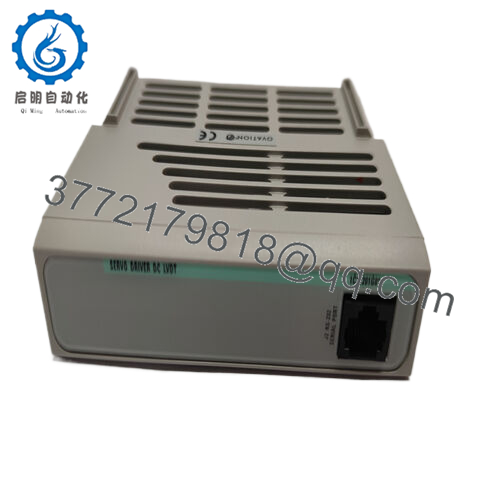
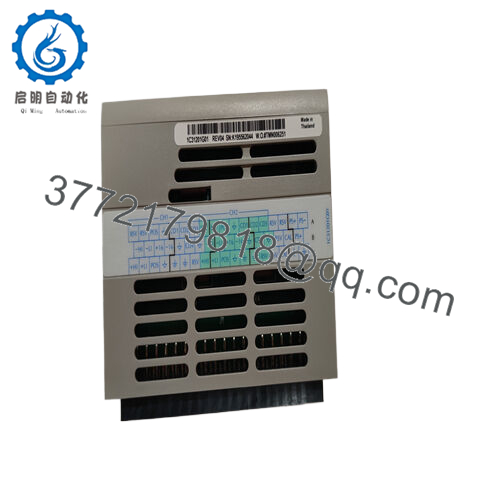
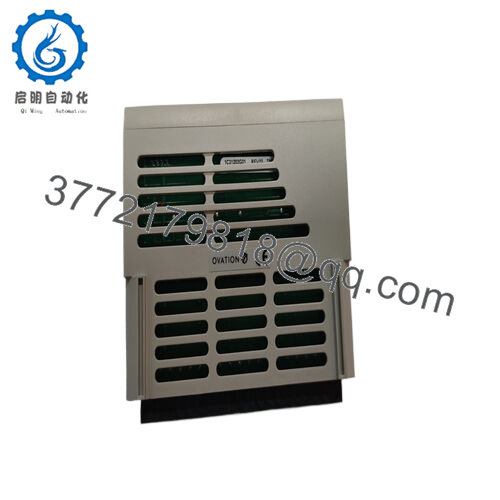
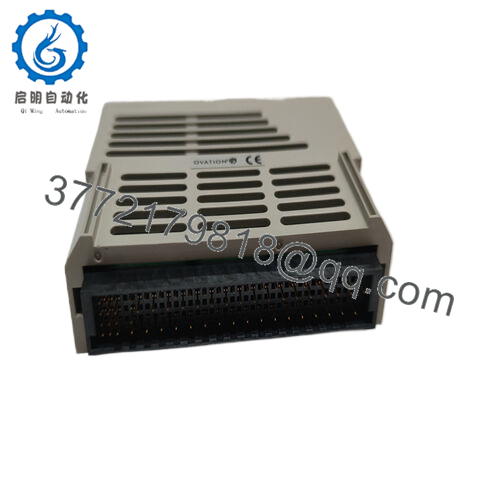
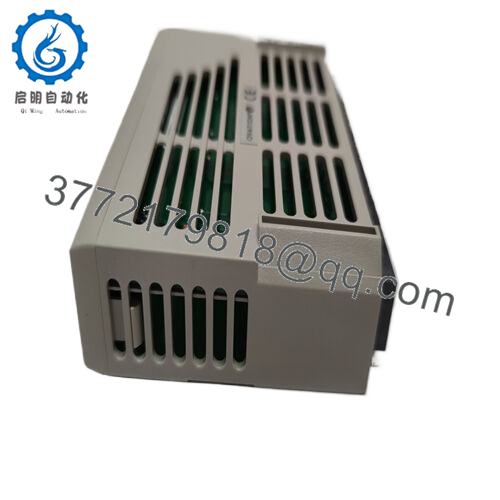
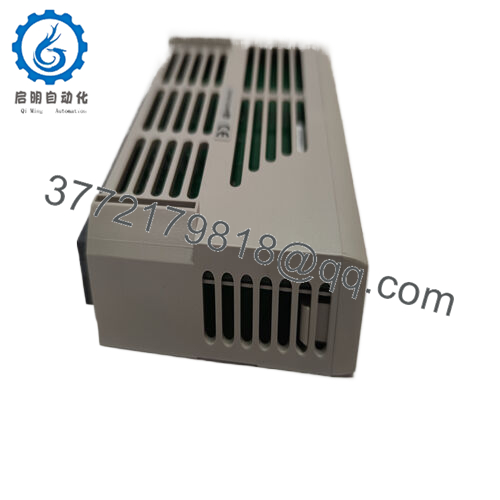
 WhatsApp: +86 16626708626
WhatsApp: +86 16626708626 Email:
Email:  Phone: +86 16626708626
Phone: +86 16626708626


